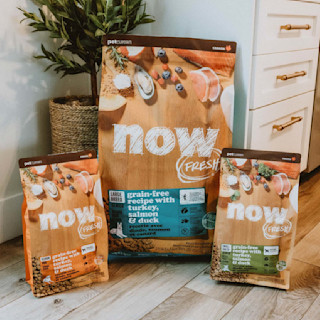October 8, 2025
What Are By-Product and Meat Meals in Dog Food?

When choosing the right food for your dog, the quality of protein matters. You’ve probably come across terms like fresh meat, meat meals, and by-products on ingredient lists. But what do they really mean? And which one is best for your dog?
In this guide, we’ll break down the differences so you can make an informed decision that supports your pup’s health and well-being.
Meat Meals in Dog Food
Named meat meals are a concentrated, dried protein ingredient from a single animal source. These would appear on an ingredient panel as “chicken meal” or “lamb meal” – note only a single, named, animal source. Meat meals which appear on a label without a specific named animal source (also known as "unnamed meat meals") can come from a number of different unknown sources and are best to be avoided.
Named meat meals are created by taking fresh meat, nutrient rich bones and cartilage, cooking it to remove the water and fat, and then grinding the dried meat into a concentrated, protein-rich powder.
By-Product Meals in Dog Food
Meat by-products like chicken by-product in dog food include all the other parts of the body other than muscle meat. This can include things like nutrient-rich organ meats, as well as undesirable ingredients like heads and feet.
Meat by-product meals are created using the same cooking process as meat meals and may be from a single animal source, but the actual animal parts in the meal can be a wide array of things. On an ingredient panel, this would be labelled as “chicken by-product meal” or “pork by-product meal.”
Fresh Meat in Dog Food
Fresh meat sounds like the gold standard, right? While named meat meals can be very high-quality sources of protein, fresh meat does offer a few key benefits. First, and most importantly, is that fresh meat does not go through the separate high heat cooking process that meat meals do; fresh meat is minimally processed, meaning its cooked only once, which helps to preserve nutrients and deliver the best nutritional value to your dog. Because it’s less processed, it’s also easy for pets to digest, making it a great option for dogs with sensitive stomachs, and adds a great taste to your pet’s meal.

Our Recommendation
Premium-Quality Dog Food Made with Fresh Meats & Fish
Our recipes pair fresh meats with complimentary protein-rich plant ingredients and eggs to achieve the desired level of protein, using a variety of premium-quality protein sources.
View dog foodResearch published in the journal, Animals (Montegiove et al, 2022) has shown that kibble using only fresh meats is higher in amino acid content as compared to those using only meat meals or a combination of the two1.
The authors found that dry pet food using only fresh chicken meat was the highest in essential amino acids, branched-chain amino acids and taurine. It also had a higher amount of monounsaturated and polyunsaturated fatty acids. In addition, its digestibility was the highest of all foods tested. These findings make the fresh-meat-based formulation a preferable choice as dry pet food.

Second, meat meals contain bone, meaning they usually have a high level of minerals, namely phosphorus, calcium, and magnesium.
Fresh meats do not contain bone, meaning the foods made with them are lower in mineral content. This controlled mineral content can help with health issues, such as kidney disease or urinary issues like struvite crystals, which can be related to high mineral content.
Though fresh meat has numerous benefits, it does often come with a higher cost as compared to concentrated meat meals. This is because fresh meats have not yet been processed and are still in their raw form.
When fresh meat is processed into a meat meal, the moisture is removed to create a concentrated protein. This means that it can take 3-5 lbs of fresh meat to create 1 lb of meat meal. It also means that more fresh meat is required in fresh meat-only recipes to achieve the same level of protein as a meat meal-only dog food.
Simply put, fresh meat costs more. Fresh meat is high in moisture, so more meat is required to reach the ideal protein levels than a meat meal recipe. Blending complementary fresh meat with complementary egg and plant ingredients is a great way to complete the protein profile.
So, What’s the Best Protein for Dogs?
It's important to note that it’s not the protein source that matters most, rather, it’s about finding the right balance of amino acids. This is why there is no single best protein source for dogs, however whole eggs are what’s considered a 'perfect' protein because they contain all the essential amino acids dogs need.
Every protein source, from fresh meat and whole eggs, to dried meat meals and legumes, contains different amounts of those essential amino acids, which means a diet that contains multiple protein sources is a great way to help ensure your pet is getting the amino acids they need.
Another option is to consider a varied diet and switching up proteins for your dog every so often. Research suggests that feeding a variety of protein and other foods, especially when started at a young age, can help the good gut bacteria easily recognize new food sources2. This may help discourage the development of food sensitivities later in life.
Final Thoughts
Not all protein sources are created equally, and more protein does not mean better nutrition. Protein serves specific functions in the body and can contribute to the palatability of a food. Certain functions can only be completed by using amino acids from protein, but anything provided in excess is not beneficial and may contribute to health issues down the road.
When choosing a food for your pup, ensure that it is compete and balanced for their individual size and life stage, and that the ingredients used are those which you feel best suit your pet’s needs and palate and your values.
Montegiove, N., E. Calzoni, A. Cesaretti, R. M. Pellegrino, C. Emiliani, A. Pellegrino, and L. Leonardi. 2022. “The Hard Choice about Dry Pet Food: Comparison of Protein and Lipid Nutritional Qualities and Digestibility of Three Different Chicken-Based Formulations.” Animals 12 (12).
Castellazzi, A. M., C. Valsecchi, S. Caimmi, A. Licari, A. Marseglia, M. C. Leoni, D. Caimmi, M. Miraglia del Giudice, S. Leonardi, M. La Rosa, and G. L. Marseglia. 2013. “Probiotics and Food Allergy.” Italian Journal of Pediatrics 39 (47).
Authors




